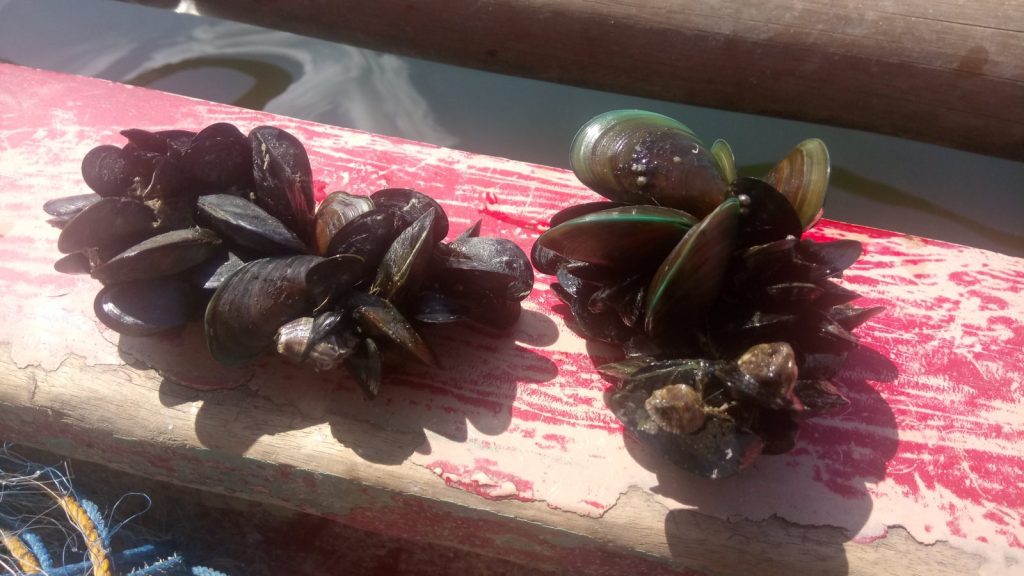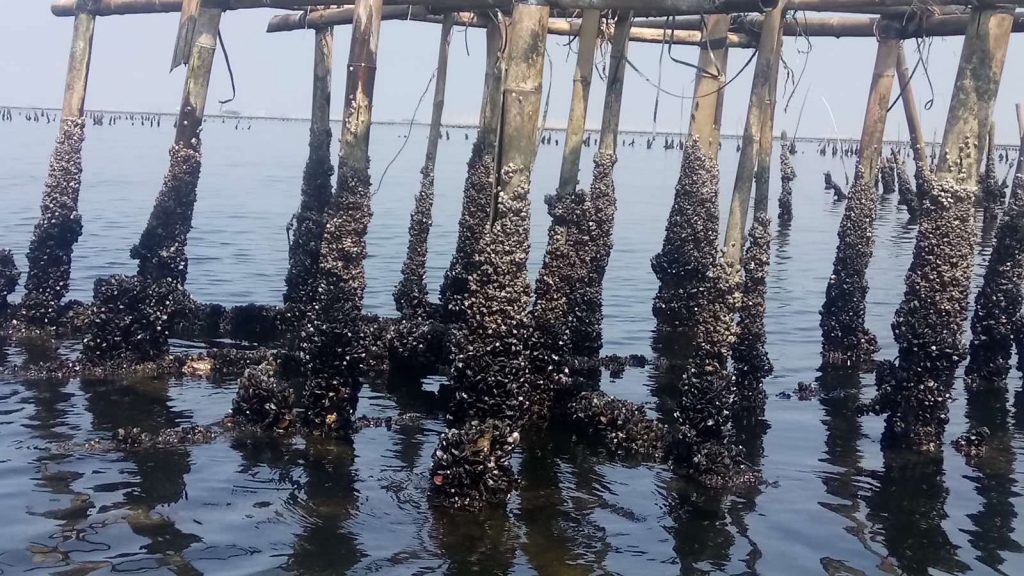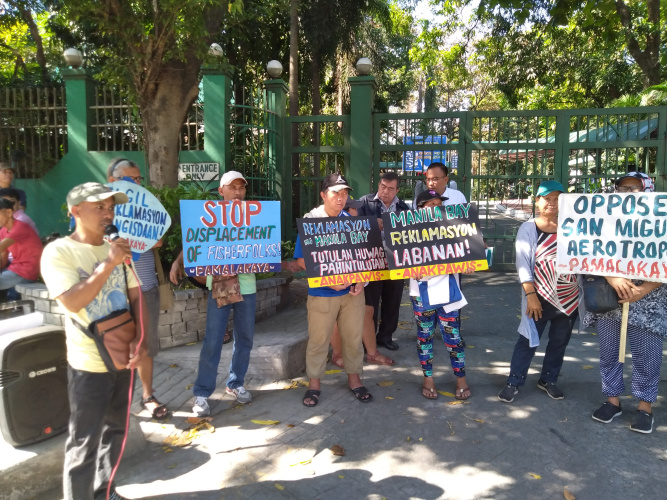Presence of invasive species indicates ‘poor water quality’ of the bay – fisherfolk
Bacoor, Cavite – The water quality of Manila Bay in its eastern part remains poor a year after the government launched the rehabilitation drive dubbed as “Battle for Manila Bay”, a group of small fishers on Wednesday claimed.
After checking his one-hectare mussel and oyster farm situated in the municipal waters of Bacoor, Joel Falcis, a resident fisherman in the said town and a spokesman for the group Pambansang Lakas ng Kilusang Mamamalakaya ng Pilipinas (PAMALAKAYA) Cavite chapter, was dismayed that the bamboo poles were covered by the invasive shellfish known to locals as “bahong”, instead of mussels (tahong) and oysters (talaba).
‘Bahong’ is a different variety of mollusk that outnumbers the traditional shellfish such as mussels and oysters, and is much more difficult to sell due to its low quality, thus considered by many fishermen as pest and invasive.
“This invasive shellfish becomes more numerous as water quality of Manila Bay continues to get worse. Its deteriorating water quality triggers ecological disturbances such as proliferation of invasive species, fish kills, and drastic decrease of our fish catch. It harshly disrupts our fishing and other economic activities,” Falcis said in a statement.
PAMALAKAYA questioned the Department of Environment of Natural Resources (DENR) over its claim that water quality of Manila Bay has ‘drastically improved’ one year after the rehabilitation.
“How does the dramatic decrease of coliform levels in certain parts of Manila Bay actually translate to its marine biodiversity? Even with this supposed drastic improvement of the rehabilitation, it is still far from the goal unless they get to the bottom of this systematic degradation of Manila Bay. What is the plan of action for the significant numbers of establishments that pollute the bay?” said Falcis.
For its part, the progressive scientist group AGHAM also questioned the rehabilitation’s improvements.
“It’s hard to conclude that there is an actual improvement if our fishers continue to suffer from fish kills and depletion of fish catch. Also, the presence of invasive species such as bahong is an indication of a polluted water,” Jerwin Baure, a member of AGHAM and PAMALAKAYA’s resident fisheries expert added.
“We know that this rehabilitation program is bound to fail because ecosystem services such as mangrove areas and coral reefs are not considered in the plan. There is no program that would restore the destroyed mangrove forests that serve not only as fish habitat, but sink for atmospheric carbon and community disaster protection,” Baure, a fisheries graduate from the University of the Philippines (UP) Visayas concluded. ###




